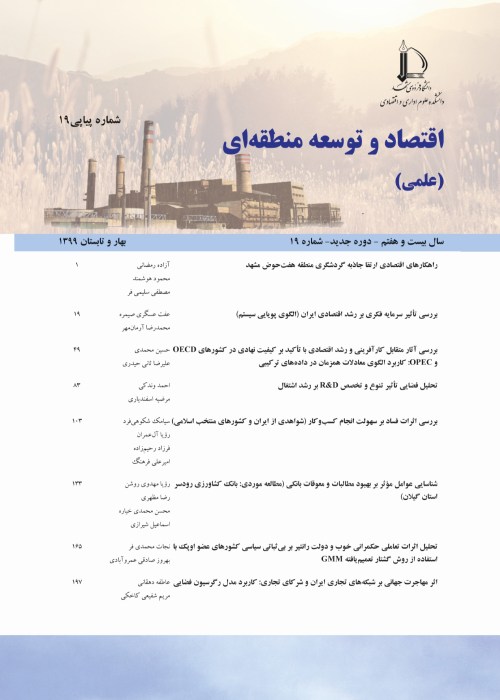Identification And Ranking of The Factors Affecting Sustainable Rural Development in Afghanistan
Nearly half of the world’s population, including four out of five people living below the poverty line, live in rural areas. Extreme poverty is concentrated mainly in rural areas. Rural people also generally have less access to education, health and other essential services. Rural development is an important and key strategy to achieve sustainable development in many developing countries. According to the World Bank, rural development is defined as “a strategy aiming at the improvement of economic and social living conditions, focusing on a specific group of poor people in a rural area. It assists the poorest group among the people living in rural areas to benefit from development Villages are the main focus of Afghanistan's economy because a large part of the Afghan population (approximately 71%) lives and works in rural areas so that out of the total population of Afghanistan, which reached 32.9 million people in 2019, 23.4 million lived in villages. In fact, 70% of the total population of Afghanistan lives in villages where the rate of poverty is 61%.
Therefore, new job opportunities can be found in the villages, and one of the most important grounds to achieve sustainable development in Afghanistan is the focus on the development of villages, which brings regional development. In other words, it can be acknowledged that regional development in Afghanistan depends on the development of villages.
Therefore, institutional economics was used in this dissertation as a suitable theoretical framework to analyze the problems of developing countries, including Afghanistan. Institutions are made up of formal constraints (rules, laws, constitutions), informal constraints (norms of behavior, conventions, and self-imposed codes of conduct), and their enforcement characteristics. All potentials in the region should be used by utilizing the institutional approach and capacity to achieve sustainable development in rural areas
Hence, the library-documentary method was used to collect data. The indicators of sustainable rural development were initially extracted by studying and evaluation the indicators formulated by organizations, international assemblies, and reliable papers. To localize these indicators according to the rural areas of Afghanistan, a five-point Likert scale questionnaire was designed, and an initial list of indicators was agreed upon by 30 experts of rural development in Afghanistan. Then, the most important ones were extracted and in the second step, the hierarchical analysis method was employed to determine the priority and importance of the indicators. Finally, a pairwise comparison questionnaire was completed by 30 participants and the weight and importance of these factors were determined using Expert Choice software.
The findings indicated that the economic environment with an importance factor of 0.34 accounts for the first priority of factors affecting the rural development of Afghanistan and the second, third, and fourth priority is assigned to the institutional environment with an importance factor of (34%), social environment (20%), and ecological environment (13%), respectively. The inconsistency rate of pairwise comparisons at this level was equal to 0.07, reflecting the validity of the results.
Thus, the first step to achieve sustainable rural development is to make changes in the economic structure of Afghanistan to create high economic growth and increase productivity, employment, and income. Agriculture is the main element of providing livelihood in the economic structure of rural areas of different countries, including Afghanistan. Moreover, it is the most important and the only economic element of villages in most development programs. Since traditional agricultural activities are performed in most rural areas of Afghanistan, the production level of agricultural products is very low compared to other countries throughout the world. It was found that the current production model of this country in the agricultural sector cannot create the economic growth necessary to achieve sustainable development, which requires a fundamental evaluation of the adopted solutions.
The second priority of rural development was found to be the institutional environment. According to the findings of this paper, the most important aspect of the institutional environment is good governance. Afghanistan was among the five countries that experienced the highest average annual compound growth rate (CAGR = 2.33%) in the governance index between 1996 and 2020; however, the very poor performance of this country in important sub-indicators such as "political stability and absence of violence and terrorism", "rule of law", and "corruption control" did not lead to a change in the development situation of this country in general and rural development in particular.
The social environment is the third priority of rural development in Afghanistan. Literacy and education were identified as the most important aspects of this environment and accounted for the first priority. With regard to the high rate of illiteracy in Afghanistan, the government must invest to provide suitable opportunities for public education and increase people's skills and awareness.
The environment accounts for the fourth priority in rural development. Accordingly, the experts introduced agriculture as the most important priority of the environment. The excessive use of chemical fertilizers and poisons and inappropriate use of production inputs to increase performance in Afghanistan in the last two decades have destroyed the environment and doubled the importance of attention to the stability of the agricultural system, continuity of production, and preservation of natural resources.
- حق عضویت دریافتی صرف حمایت از نشریات عضو و نگهداری، تکمیل و توسعه مگیران میشود.
- پرداخت حق اشتراک و دانلود مقالات اجازه بازنشر آن در سایر رسانههای چاپی و دیجیتال را به کاربر نمیدهد.



